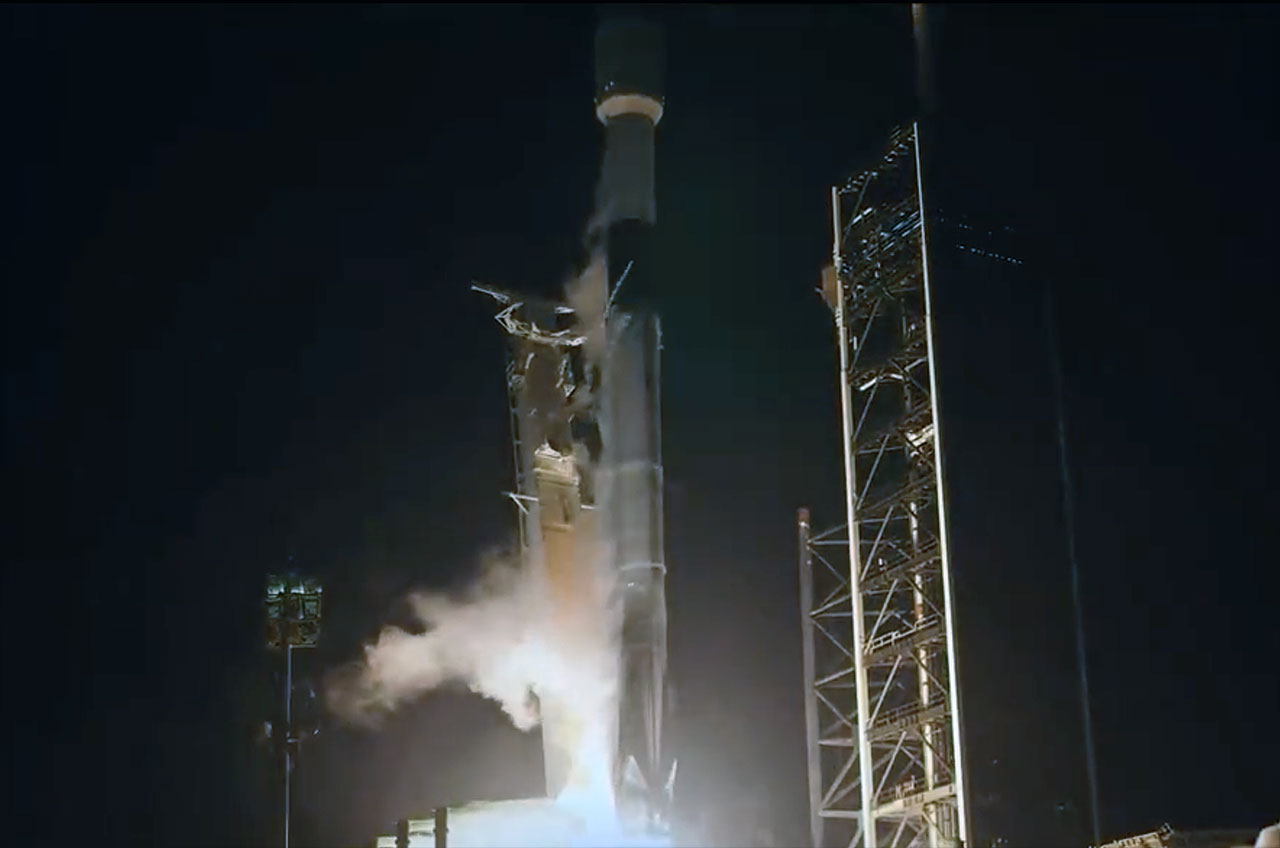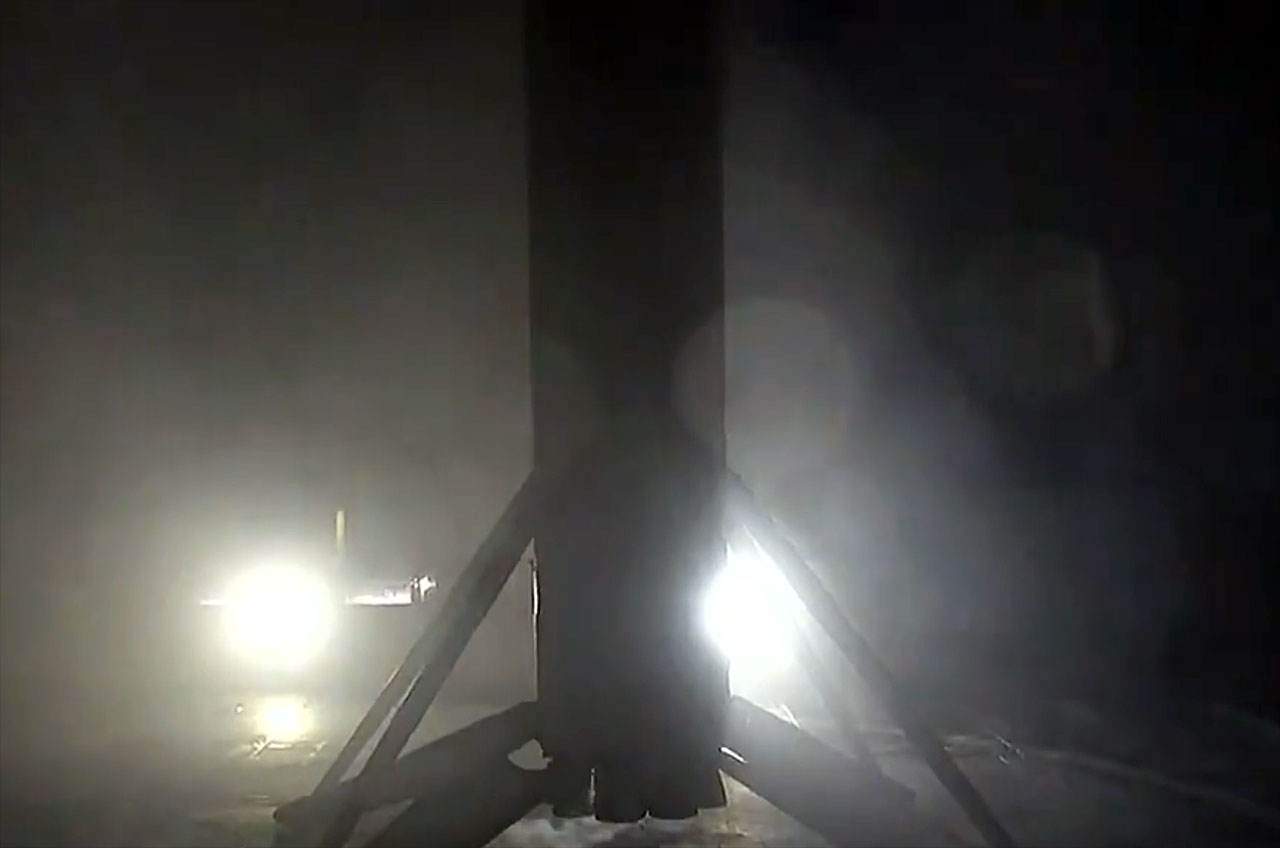For the second time in a mere month, SpaceX has tied its rocket-reuse record.
A Falcon 9 rocket carrying 23 of SpaceX's Starlink internet satellites launched on Saturday night (March 23) from NASA's Kennedy Space Center in Florida at 11:09 p.m. EDT (0309 GMT on March 24).
It was the 19th liftoff for this Falcon 9's first stage, according to a SpaceX mission description. That tied a mark set by a different booster this past December and matched by another rocket on Feb. 22.
Related: Starlink satellite train: How to see and track it in the night sky

To plan, the Falcon 9's first stage came back to Earth for the 19th time on Saturday. It made a vertical landing about 8.5 minutes after liftoff on the drone ship Just Read the Instructions, which was stationed off the Florida coast in the Atlantic Ocean.
The Falcon 9's upper stage, meanwhile, was set to deploy the 23 Starlink satellites into low Earth orbit (LEO) about 65 minutes after liftoff.

Saturday's launch was the 28th Falcon 9 mission of 2024 for SpaceX. It came just two days after the company launched a robotic cargo mission toward the International Space Station for NASA.
Seventeen of the 27 Falcon 9 missions already in the books this year have been dedicated to building out Starlink, SpaceX's huge and ever-growing broadband constellation in LEO. Starlink currently consists of more than 5,550 operational spacecraft, according to astrophysicist and satellite tracker Jonathan McDowell.
Get the Space.com Newsletter
Breaking space news, the latest updates on rocket launches, skywatching events and more!
Join our Space Forums to keep talking space on the latest missions, night sky and more! And if you have a news tip, correction or comment, let us know at: community@space.com.

Michael Wall is a Senior Space Writer with Space.com and joined the team in 2010. He primarily covers exoplanets, spaceflight and military space, but has been known to dabble in the space art beat. His book about the search for alien life, "Out There," was published on Nov. 13, 2018. Before becoming a science writer, Michael worked as a herpetologist and wildlife biologist. He has a Ph.D. in evolutionary biology from the University of Sydney, Australia, a bachelor's degree from the University of Arizona, and a graduate certificate in science writing from the University of California, Santa Cruz. To find out what his latest project is, you can follow Michael on Twitter.









